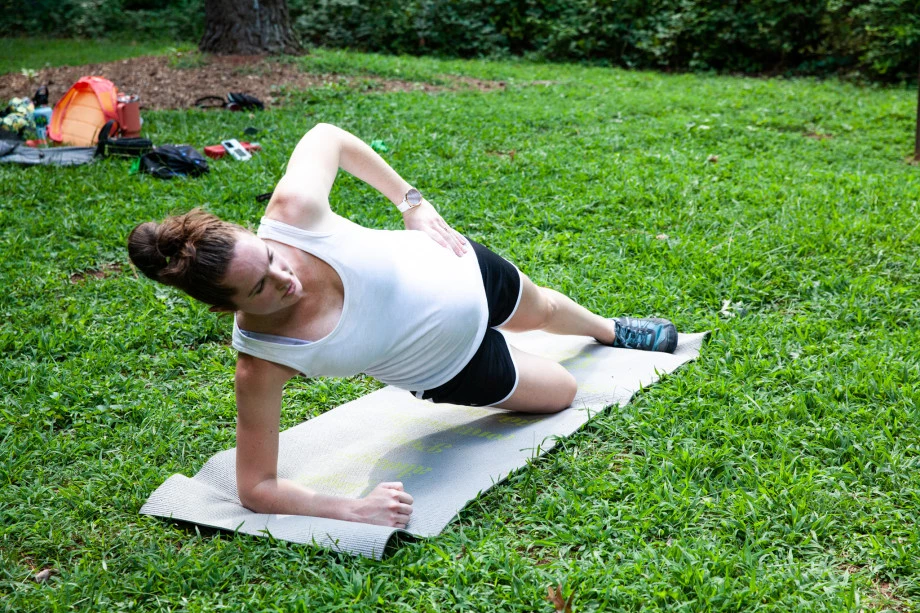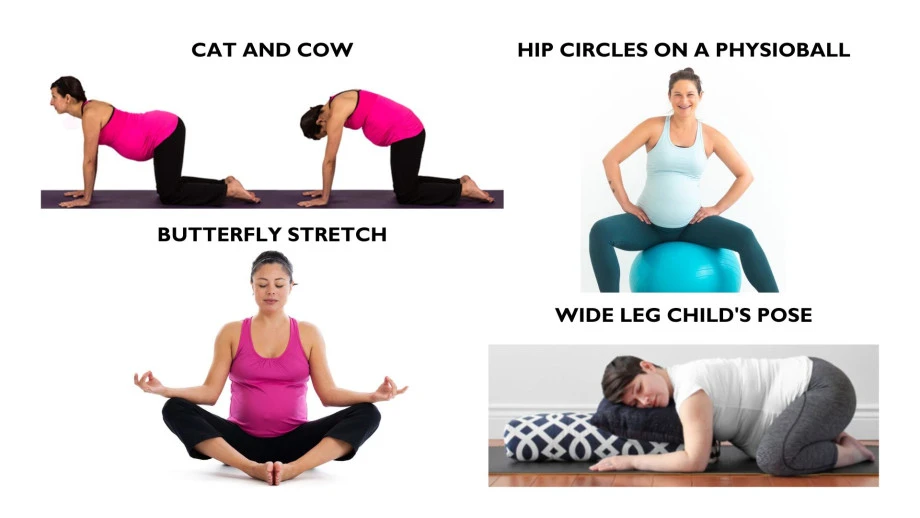Maintaining Mommy Momentum for a Healthy Pregnancy Journey
Staying Active and Safe: A Guide to Exercising Through Pregnancy
Exercising during pregnancy offers numerous benefits for both mom and baby. It helps maintain a healthy weight, reducing the risk of gestational diabetes and back pain. Additionally, it prepares your body for the lifting activities that come with caring for a newborn.
However, many women are unsure about what exercises are safe during pregnancy. Pregnancy brings new challenges and changes, regardless of past experiences. Whether you prefer walking, running, swimming, CrossFit, weight training, or Zumba, you can stay active with some important modifications and precautions. Embrace the incredible journey of pregnancy while keeping yourself and your baby healthy.
DISCLAIMER: Before starting a new exercise routine, it's crucial to get approval from a healthcare professional. Make sure to talk to your MD/OB about your fitness plans before you begin.
First Trimester:
During the first trimester, some women may experience significant limitations due to nausea and fatigue. While physical modifications may not be necessary during this period of pregnancy, it is crucial to pay attention to your body's signals. If something doesn't feel right or if you're uncomfortable with a certain activity, it's not worth pushing yourself. However, in general, women can usually continue their pre-pregnancy exercise routines with a few considerations.
It's important to avoid high-impact activities that could result in falling or putting pressure on the belly (such as snowboarding, contact sports, or burpees). Additionally, exercising in extreme heat should be avoided, and high-intensity workouts that make it difficult to speak should be modified (use the talk test). Many women find that they can comfortably continue activities like running, biking, weightlifting, and participating in workout classes during the first trimester with these adjustments.
Second Trimester:
Making it to the second trimester brings relief to many pregnant women. Energy levels increase and nausea decreases. It's a time when you can feel more comfortable participating in an exercise program. Your belly is also starting to grow and become more noticeable. As your pregnancy progresses, it's important to follow the same precautions as the first trimester, with some additional modifications that may be necessary.
To ensure the safety of both the baby and the growing belly, it is advisable to steer clear of exercises and movements that involve rapid motions with weights in front of the belly. This includes exercises like clean and snatch with a barbell. However, there is a way to modify these exercises by transitioning to a single-arm clean or snatch using a kettlebell instead of a barbell.
Additionally, it is important to avoid any exercise that causes a bulge or doming of the abdomen. This typically happens when performing exercises that put excessive pressure on the abdominal wall, such as push-ups and planks. To modify these exercises, you can reduce the intensity by doing planks or push-ups on your knees or an elevated surface. Another option is to transition to a side plank.

Exercising on your back for a long time should be avoided to prevent compression on the Inferior Vena Cava, a large vein that carries blood from your lower and middle body back to the heart. This can lead to symptoms like dizziness, nausea, or tingling. While it's not completely forbidden to exercise on your back, it's best to limit the time spent in this position or use props to elevate your back and shoulders at a 15% incline. Additionally, avoid movements that cause urine leakage or a heavy feeling in the pelvis, as well as any exercises that worsen or cause pain.
Third Trimester:
The baby and belly are growing rapidly! In the third trimester, many women may experience fatigue. Exercise and daily tasks become more challenging. The exercise precautions and modifications discussed earlier still apply. It is generally safe to continue exercising throughout pregnancy. However, it's important to consider the increased weight and size of the belly and adjust exercises accordingly. During this trimester, it's recommended to reduce the amount of weight added to movements to accommodate the extra weight around the abdomen. Including exercises that relax the pelvic floor and promote optimal fetal positioning can be beneficial for labor and birth. Gentle mobility exercises that are great for releasing tension and relieving pain in the third trimester:
- Cat-cow,
- Hip circles on a physioball,
- Wide leg child's pose, and
- Butterfly stretch

Pregnancy is a rollercoaster of emotions - excitement, fear, joy, confusion, and exhaustion. But staying active shouldn't add to your stress, but rather provide some endorphins and positive energy. Don't hesitate to ask questions and seek advice from fitness or healthcare professionals who can steer you in the right direction for a happy and healthy pregnancy journey. Above all, listen to your body. If something feels uncomfortable or off, modify or stop the activity causing discomfort.
Remember, the well-being of both you and your baby should always be the top priority when engaging in physical activity during pregnancy.
1. Strong GG. Girls Gone Strong Prenatal & Postnatal Coaching Certification. go.girlsgonestrong.com. Accessed August 8, 2023. https://www.girlsgonestrong.com/cppc
2. Pregnancy. www.acog.org. https://www.acog.org/womens-health/pregnancy
This information is provided as an educational service and is not intended to serve as medical advice. If you are seeking specific orthopedic advice or assistance, please consult with your OrthoCarolina physician or locate one in your area through OrthoCarolina’s website at www.OrthoCarolina.com.
Back




August 27, 2025